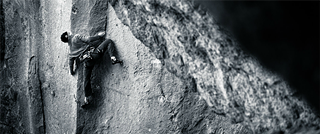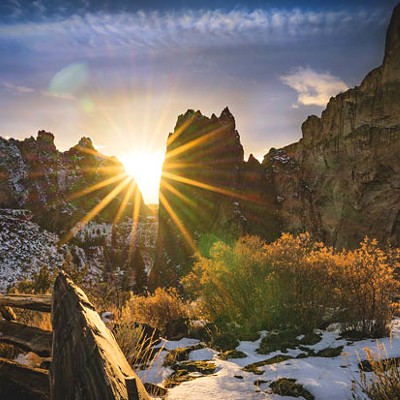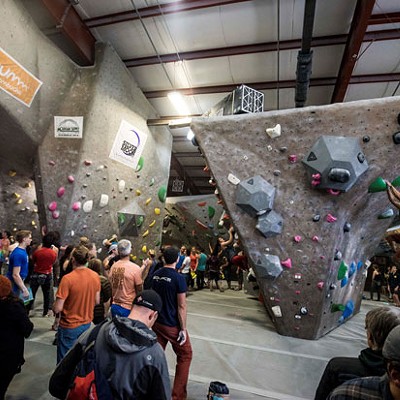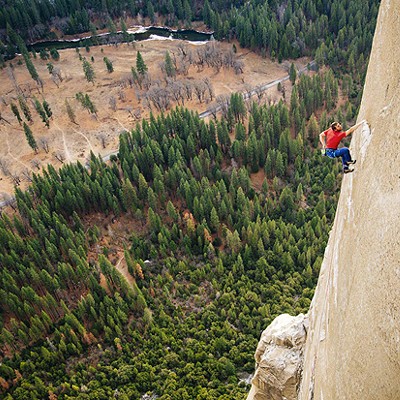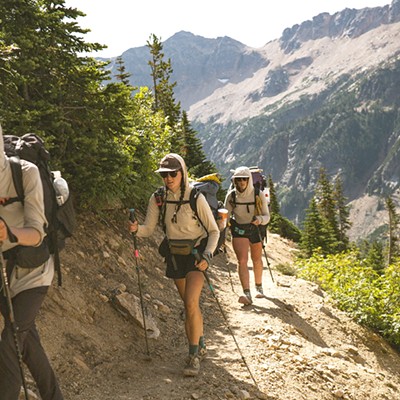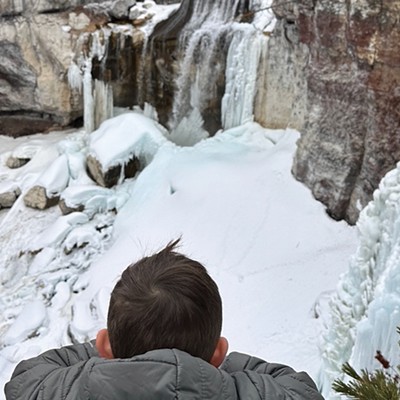What's now deemed as the second hardest technical climb in the North Cascades was pioneered this past August by a trio of climbers including Bend local and climbing guide, Max Tepfer. The Tiger—11 pitches with six leads of 5.10+ and harder—was created by Tepfer, Blake Herrington and Colin Moorhead on 1,000 feet of granite near the North Cascades' better-known climbing area of Liberty Bell and Liberty Crack, the hardest-rated route in the North Cascades.
The free climb offers a solid mix of features on solid granite walls, and what Tepfer described as "really clean monolithic," but also incorporating crystals, pockets, cracks, caves and ledges.
"It's a gem in that regard," Tepfer says. "Very few crack systems go bottom to top with disparate features connecting—it takes time to see where the holds are. And where the crack disappears, you leave protection points."
The trio used both top-down and ground-up techniques to put in the new route, cleaning cracks and placing twelve protection bolts with some anchor bolts. Herrington and Moorhead first climbed the route in July and returned in early August with Tepfer to place protection on an additional three pitches.
Eugene native Tepfer began climbing in high school and by his early college years committed to pursuing a guiding life working with both the National Outdoor Leadership School (NOLS) in the Pacific Northwest and Rocky Mountains, and then going on to teach as an adjunct instructor at the University of Oregon. For the past three years, he has been instructing for Smith Rock Climbing School as an American Mountain Guide Association (AMGA) Rock Guide.
"What we teach is entirely dependent on someone's exposure to the sport and to give them the basic levels of instruction; the other end of the spectrum is helping someone with more skill with multi-pitch and traditional climbing, or simply climbing with someone who wants a partner," says Tepfer. "Matching someone's ability and being able to share the experience is key."
Closer to home, fall is the prime time at Smith Rock, or as Smith Rock Climbing School director Pete Keane calls "the prime-est of the prime." With cooler temperatures and mellow sun, single pitch short climbs as the day length wanes are what draw many to Smith Rock now.
In the '50s, a trio of climbers from Madras—Jack Watts and brothers Jim and Jerry Ramsey—and Portlanders Gil and Vivian Staender, first established climbing lines in the park. Today, more than 500,000 visit, climb, and hike Smith Rock State Park in the more than 1,800 routes in and around the park that have since been created in welded tuff (compressed volcanic ash) and complemented by bands of columnar basalt that rim Crooked River.
"Weather dependent, but there are good climbing days even in the heart of winter—it's one place in country to climb 365 days a year where you have a rare weather window," says Tepfer. "Especially for locals, the best time to climb is right now."

